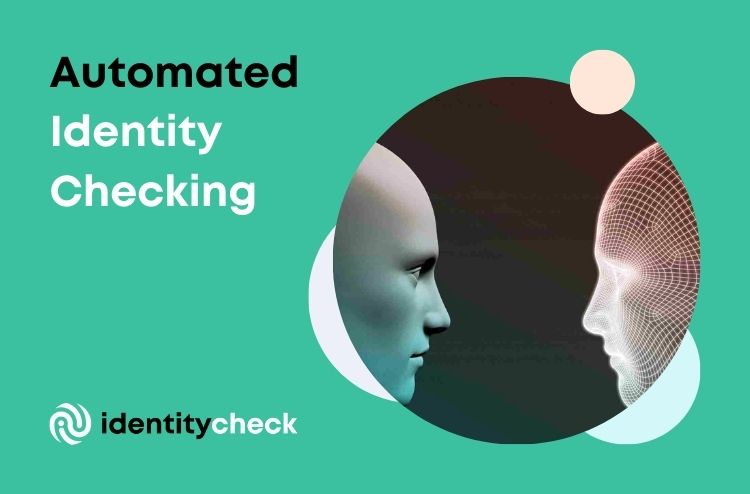Identity Verification can be a laborious task, especially when trying to minimize the impact on end users, meet Government regulations, and reduce the risk of a data breach.
In this article, we explore the key steps of identity Verification and offer ways in which the steps can be automated.
Note: In some industries, Identity checks may be referred to as VOI (Verification of Identity), POI (Proof of Identity), Know Your Customer (KYC), or Customer Due Diligence (CDD).
Steps to complete Identity Verification
Identity verification typically involves a series of steps to confirm that a person is who they claim to be. These steps may include:
Collecting personal information
This may include things like a person’s name, date of birth, address, and government-issued identification number.
You may also collect images of Government-issued documents including passport, driver’s license, or other government-issued ID.
Storing personal information
Whilst storing the information you collect is an important step, it’s also a critical consideration when it comes to data privacy. This is because any personal information you collect is likely to be determined as your legal responsibility to protect.
Will you be collecting and storing hard copies in a filing system, or will you scan and store them in a shared folder or other software? Access privileges and security considerations for these documents must be considered.
In some cases, you may be able to determine that document copies are not required, and you only need to contemporaneously record the timestamp and type of verification conducted. Naturally, this would greatly reduce your liability if possible.
Authenticating identity documents
This involves checking the authenticity of government-issued ID cards, such as a driver’s license or passport. This usually involves a visual inspection of the identity document to check for tempering and authenticity marks on the document. You may also verify any photo on the identity document is the same as the person who presented it.
Specialist training and first-hand experience may be necessary to complete this check with higher degrees of confidence.
Checking Identity Documents with a trusted source
Checking with a trusted source, such as a Government database. Note, with the increase in online identity theft, verifying the document number may not verify it’s owned by the individual submitting the document details.
Biometrics for Authentication
Biometrics may be used in some instances to assist with the strength of identity verification. This may include the use of fingerprints, facial recognition, or other biometric data to confirm a person’s identity.
Additional identity check processes
Depending on your use case, or industry, there may be additional checks required such as Police, Visa, Rights to Works, or AML (anti-Money Laundering). These checks require access to separate databases that differ by country or region. It’s important to arrange reliable access to these database and understand the costs involved.
Identity Check Automation
Automating these steps could involve the use of identity check software that can perform tasks such as document scanning and comparison, facial recognition, and other forms of biometric analysis. Additionally, Identity verification can be automating by connecting with Government ID verification system where you can verify the ID against the records in Government databases like Document Verification Service (DVS) in Australia, Aadhaar in India, Social Security Number (SSN) in US, and National Identity Card (NIC) number in Pakistan.
Optical Character Recognition (OCR)
OCR is the process of extracting text for computational reasons. By conducting OCR in your Identity Verification process, you can avoid additional steps of manual data entry. For example, you can extract the full legal name and date of birth for your contact using their Driver’s Licence or Passport. You can then insert these details into a Police, Visa, or AML (Anti-Money Laundering) check.
Data Safety and Security in Identity Verification
It’s important to note that Automating identity verification processes needs proper compliance and permission as per the regulations of the respective country. Data safety and Security should also be considered to be compliant with data protection regulations such as GDPR.
Integrating KYC with your SaaS
Whilst automating the steps of the Identity Verification process can be a great time-saver, what can take it to another level is integrating the process into your existing software.
First, you may want to consider where to integrate the process. For many businesses, a CRM such as HubSpot, Zendesk, or Salesforce would make sense. However, if you’re in recruitment or the HR department, you may want to integrate with Employment Hero. You can read about other Identity Check Use Cases here.
In some platforms, you may be able to automate even more of the steps by using embedded workflow builders. For example, read more about how you can automate KYC in HubSpot here.
Conclusion – Automated Identity Checks
Fully automating the many steps of Identity verification can be hard work, and full of unexpected costs or risks.
You may also need to consider additional checks required beyond identity verification, and where to access these, or how to integrate them in your process.
Making the process completely hands-off can be made possible using a variety of software solutions. Software like IdentityCheck can fully automate the process end-to-end, and integrate to your existing tech stack.











